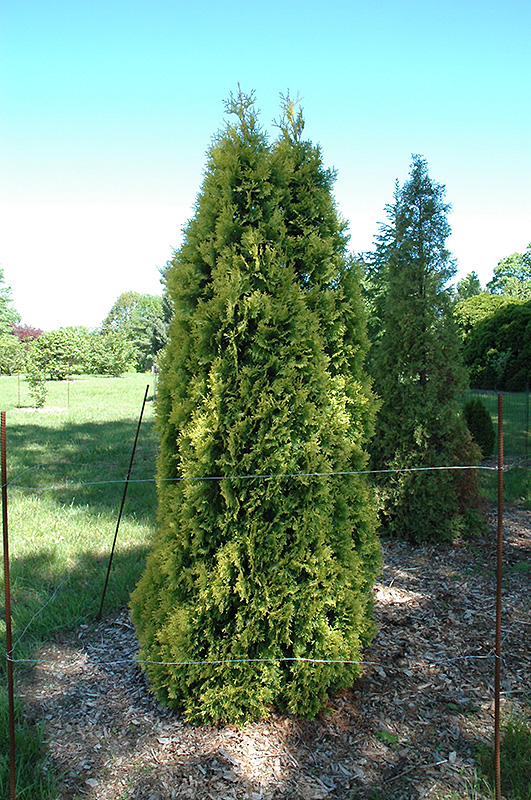Douglas Golden Arborvitae
Thuja occidentalis 'Douglasii Aurea'
Height: 30 feet
Spread: 20 feet
Sunlight:
![]()
![]()
Hardiness Zone: 3b
Other Names: Eastern White Cedar
Description:
A conical evergreen tree for home landscapes featuring dense golden foliage all year long; will grow quite tall; makes an ideal color accent for border areas, hardy and adaptable, takes pruning well; best with some sun, protect from drying winds
Ornamental Features
Douglas Golden Arborvitae is primarily valued in the landscape for its distinctively pyramidal habit of growth. It has attractive gold evergreen foliage which emerges yellow in spring. The scale-like sprays of foliage are highly ornamental and turn yellow in the fall, which persists throughout the winter.
Landscape Attributes
Douglas Golden Arborvitae is a dense evergreen tree with a distinctive and refined pyramidal form. Its relatively fine texture sets it apart from other landscape plants with less refined foliage.
This is a relatively low maintenance tree. When pruning is necessary, it is recommended to only trim back the new growth of the current season, other than to remove any dieback. It has no significant negative characteristics.
Douglas Golden Arborvitae is recommended for the following landscape applications;
- Accent
- Vertical Accent
- Hedges/Screening
Planting & Growing
Douglas Golden Arborvitae will grow to be about 30 feet tall at maturity, with a spread of 20 feet. It has a low canopy, and should not be planted underneath power lines. It grows at a slow rate, and under ideal conditions can be expected to live for 50 years or more.
This tree does best in full sun to partial shade. It prefers to grow in average to moist conditions, and shouldn't be allowed to dry out. It may require supplemental watering during periods of drought or extended heat. It is not particular as to soil type or pH. It is somewhat tolerant of urban pollution, and will benefit from being planted in a relatively sheltered location. Consider applying a thick mulch around the root zone in winter to protect it in exposed locations or colder microclimates. This is a selection of a native North American species.
Disclaimer - This Plant Finder tool is an online resource representing many of the varieties that we carry over the course of the season, and is intended for informational purposes only. Inventory varies seasonally, so we cannot guarantee that every plant will be in stock at all times - please contact the store directly for current availability. It does not include our entire selection of plants, so be sure to visit our store to see varieties that may not be represented on this list.

